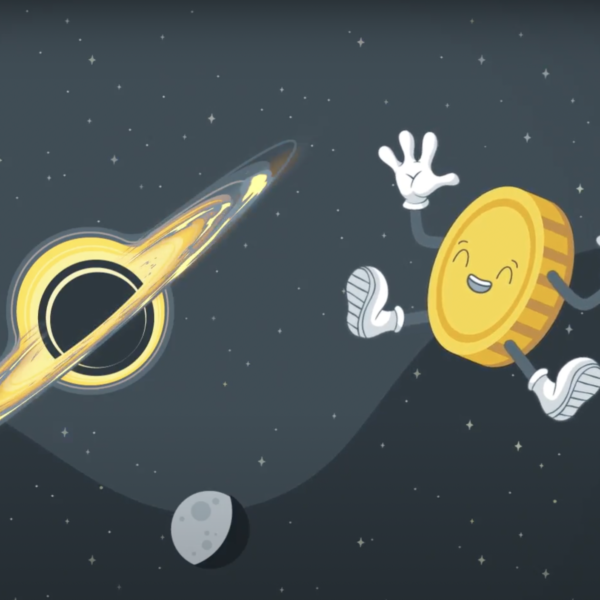

The digital euro, the end of physical money?
Digital money has come to stay, although for many it is a big unknown. Could this be the end of physical money as we know it?
We are becoming more and more accustomed to paying by electronic means, because it is easy, convenient, and you do not need to carry cash on you. We have already heard about cryptocurrencies, bitcoins, and cryptocurrencies. For this reason, Europe does not want to be left behind and will create its own digital currency, as countries such as China, Sweden, and Uruguay have already done.
According to the European Central Bank (ECB), this digital currency could come to life 4 to 5 years from now.
The digital euro is what we know as an electronic currency managed and supervised by the ECB that can be used by both citizens and businesses to pay, and will not in any way replace cash, but will complement it. It is what is known as a digital currency issued by a central bank, that is, a CBDC (Central Bank Digital Currency).
What is clear is that the digital euro will not be a cryptocurrency or a crypto asset, says the ECB, as it has the support of the Eurozone and will remain the currency of all member states.
When can we use it?
No release date has been set yet. All we know is that it will possibly be operational in about 4 or 5 years. In any case, creating a type of currency like this, digital, secure, accessible, and efficient takes time. The ECB recently conducted a public survey of the population to see what the interest was on the need to create this digital currency, which indicated that there is a real need and demand.
What are its advantages?
It would be an alternative to cash in extreme situations, such as catastrophes, in which cash cannot be used and in which traditional means of payment, such as POS, do not work. It would allow you to make safer and faster payments without intermediaries. It would also promote financial innovation as well as the inclusion of developing countries in the world of finance, which is now difficult for them.
What is the difference between digital euro and cryptocurrencies?
Cryptocurrencies are not Central Bank money, so the main difference is that cryptocurrency prices are volatile and are backed by companies or private investors.
With the launch of the digital euro, the ECB would shield the euro and allow citizens to use this form of payment securely. But not all is good news. Using the digital euro takes away the privacy we now have with physical money.
The competitors of the digital euro
A good number of Central Banks are working on the development of digital currencies, but some countries are much more advanced than others. We can highlight three: firstly, China, whose digital currency (called eYuan) launch date, is unknown, but tests are being carried out on the operation of this currency in retail transactions; secondly, e-Krona, which is Sweden’s cryptocurrency and has already begun testing by the Central Bank. And finally the e-Peso, which was tested in 2017 in order to analyse its suitability.
According to Christine Lagarde, director of the European Central Bank, the digital euro is a means of payment under study that could be tested in 2021, although its operational launch will still be long in coming. In any case, the advent of digital currency would be a real revolution in the economy as we know it.
11Onze is becoming a phenomenon as the first Fintech community in Catalonia. Now, it releases the first version of El Canut, the super app of 11Onze, for Android and Apple. El Canut, the first universal account can be opened in Catalan territory.
If you liked this article, we recommend you read:
 Economy
EconomyThe heart of economics
3 min readAt 11Onze we want people to become financially empowered. You can start doing so with the




Trobo q igual q l’or té una funció única, els diners físics també. Espero q com l’or, els diners físics continuen vigents per molt de temps.
Veurem que passa, Jordi….
Bo, pero la pela es la pela
I tant! Per això, a La Plaça, podem guanyar peles. Gràcies, Josep!
Ben definit
Gràcies, Ricard!
No veig quina és la diferència entre l’euro digital i pagar en euros per mitjans digitals (targeta, Bizum, transferències, …).
Dieu “Seria una alternativa als diners en efectiu en situacions extremes, com ara catàstrofes, en les quals no es pugui utilitzar l’efectiu i en les quals els mitjans de pagament tradicionals, com ara els TPV, no funcionin”, però en cas de ‘catàstrofe’ també pot quedar inutilitzada la infraestructura informàtica o de comunicacions necessaria per a utilitzar l’euro digital.
Podeu aclarir que aporta l’euro digital a la operativa normal en euros per mitjans digitals?
Gràcies.
Hola David, l’Euro digital crec que és cash, podria substituir als bitllets i monedes d’Euro actuals.
És a dir, que podries tenir euros digitals sense necessitat d’obrir cap compte a cap banc. Com l’efectiu actual, però en format digital.
L’euro digital encara està en una fase molt incipient (https://www.ecb.europa.eu/press/pr/date/2021/html/ecb.pr210714~d99198ea23.es.html), però aquests avantatges són els que detalla el mateix BCE, tot i que, com dius, en funció de la magnitud de la catàstrofe, l’afectació a aquest euro digital també podria ser important (només cal pensar en una “apagada” energètica generalitzada).
Quant a la diferència amb les transaccions digitals de tota mena, recomano molt la sèrie El Diner (https://www.11onze.cat/aprendre/serie-el-diner/el-diner/), especialment els capítols 01 La doble moneda, 03 La conversió monetària i 05 La creació monetària.
Està clar que amb el tems tot te que cambiar, no podem dependre sempre del matix i dels mateixos .
Sí, Manel; tot canvia, i més que canviarà! Gràcies per la teva reflexió.
M’he hauré de apuntar a econòmiques…
Molt interessant i desitjant que el possin en marxa i no dependre tant dels bancs espanyols.
Sí; aquest seria sens dubte un valor afegit. Gràcies, Jesús!
Article aclaridor…Gràcies
Gràcies, Francesc pel teu comentari!
Doncs benvingut el diner digital!
Gràcies pel teu comentari Miquel, ens veiem per La Plaça
Exposició molt interessant. Gràcies per la informació. Adaptem-nos als nous canvis.
Moltes gràcies pel teu comentari, Pere
Que tinguis molt bon dia, ens veiem per La Plaça!
Quina és la diferéncia dons entre la Moneda escriptural (privada) o secundaria (es a dir, la que utilitzem al fer una transfeéncia o pagar amb tarjeta) i aquest nova moneda “euro Digital”???
Bon dia, Joan, t’he fet un petit recull del que diu el nostre article sobre el que preguntes, espero haver-te ajudat: “L’euro digital és el que coneixem com una moneda electrònica gestionada i supervisada pel BCE que tant la podran utilitzar els ciutadans com les empreses per pagar, i que no substituirà en cap manera els diners en efectiu, sinó que els complementarà. Seria una alternativa als diners en efectiu en situacions extremes, com ara catàstrofes, en les quals no es pugui utilitzar l’efectiu i en les quals els mitjans de pagament tradicionals, com ara els TPV, no funcionin”.
Que tinguis molt bon dia, ens veiem per La Plaça!
Molt bo
Moltes gràcies pel teu comentari Josep!
Bon dia,
Ho tinc clar que la moneda física acabarà desapareixent, i que amb el mòbil ho farem tot
Aquest serà el futur Miquel, gràcies pel teu comentari!
Molt bon article!!
Moltes gràcies pel teu comentari, Manel!
Ben explicat. Són coses que s´han d´anar absorbint de mica en mica. Una cosa és adaptar-se al que hi ha i una altra entendre-ho
Moltes gràcies pel teu comentari, Mercè. Que tinguis molt bon dia, ens veiem per la Plaça!
super!
Molt interessant!
Celebrem que t’hagi agradat!
M’inicio al tema del diner digital. Va bé llegir, gràcies.
Será un bon que l’euro digital, ja que poder assegura més estabilitat que les criptomonedes
Segurament Alicia. Per altra banda, pensa que les criptomonedes no estan regulades
No sé si és cert, pero vaig llegir ja fa alguns mesos ,que a Suissa ,moltes empreses paguen entre elles ,en monedes virtuals que ells mateixos s,han inventat. De tota manera la vostra expicació m,ha interessat. Gràcies.
Com a curiositat, Carme, tinc entès que el cantó suís de Zug accepta, des del febrer d’enguany, el pagament d’impostos amb bitcoin, fins a un import de 100.000 CHF.
Gràcies per la teva aportació, Carme! Salutacions!
Bon argument
Gràcies Joan, desitjo que t’hagi agradat aquest article. Recorda que tens molts més a la secció Magazine. Una salutació i ens veiem a la Plaça.
No és certa l’afirmació que totes les criptomonedes siguin volàtils, hi han moltes StableCoins, monedes referenciades a una moneda fiat, sobre les que s’està edificant tot un nou model econòmic.
Si, Joan, és veritat el que dius…, però tot essent així, això no està garantit al cent per cent… M’imagino que és aquesta la interpretació que li volia donar el redactor de l’article… Ningú sap exactament que passaria amb les criptomonedes si hi hagués un daltabaix com el que va succeir l’any 2.007 amb les hipoteques brossa als EEUU, salvant les diferències, clar…
Que interessant. Bon matís